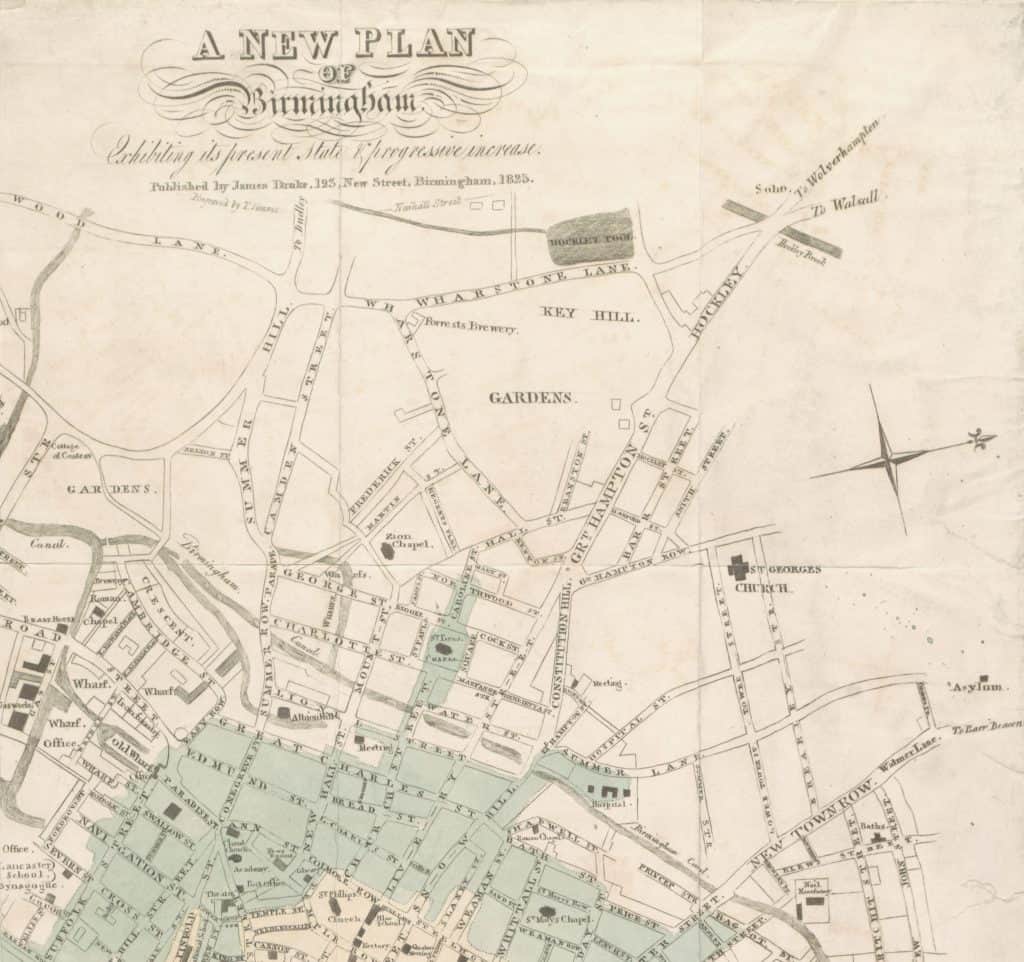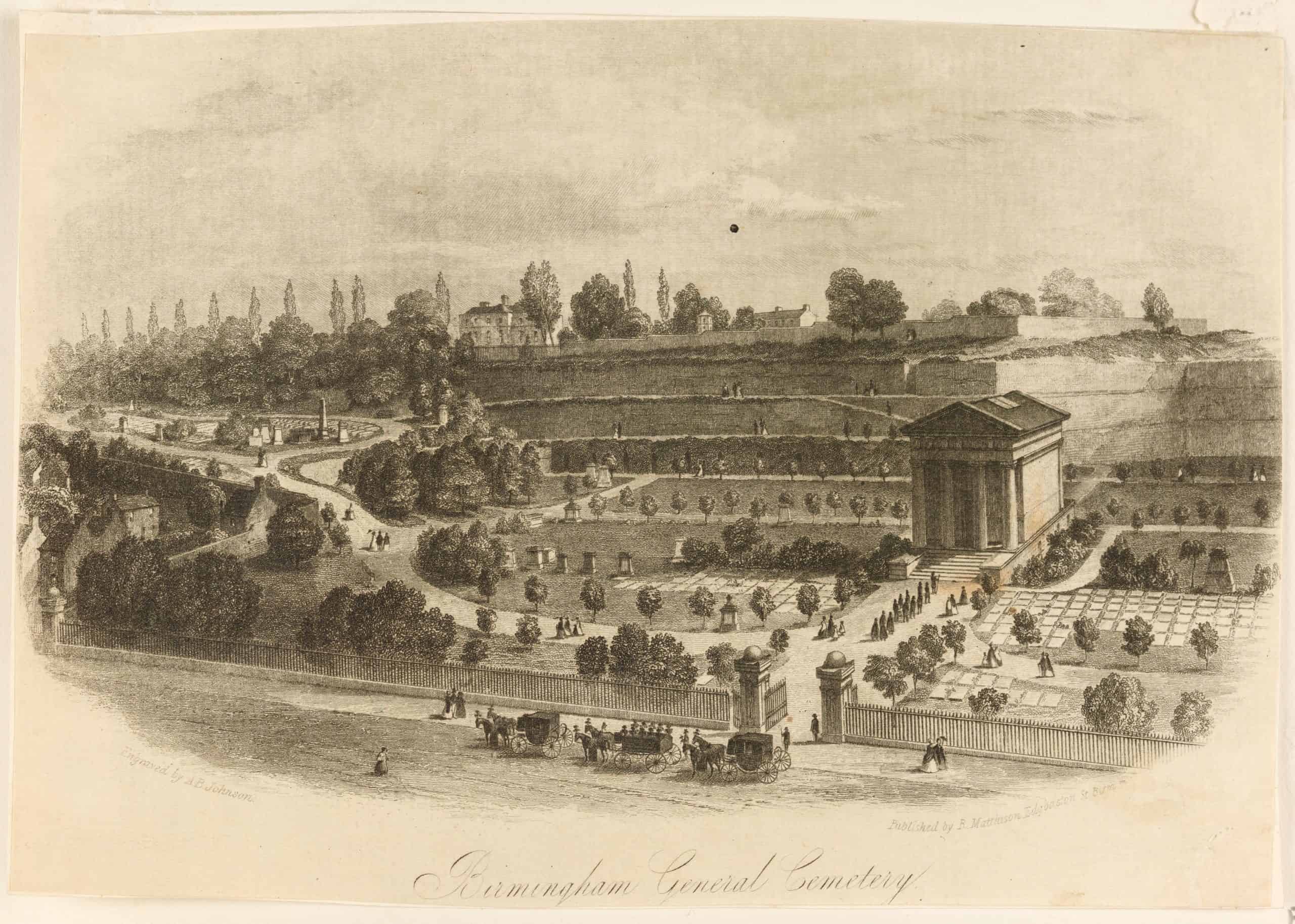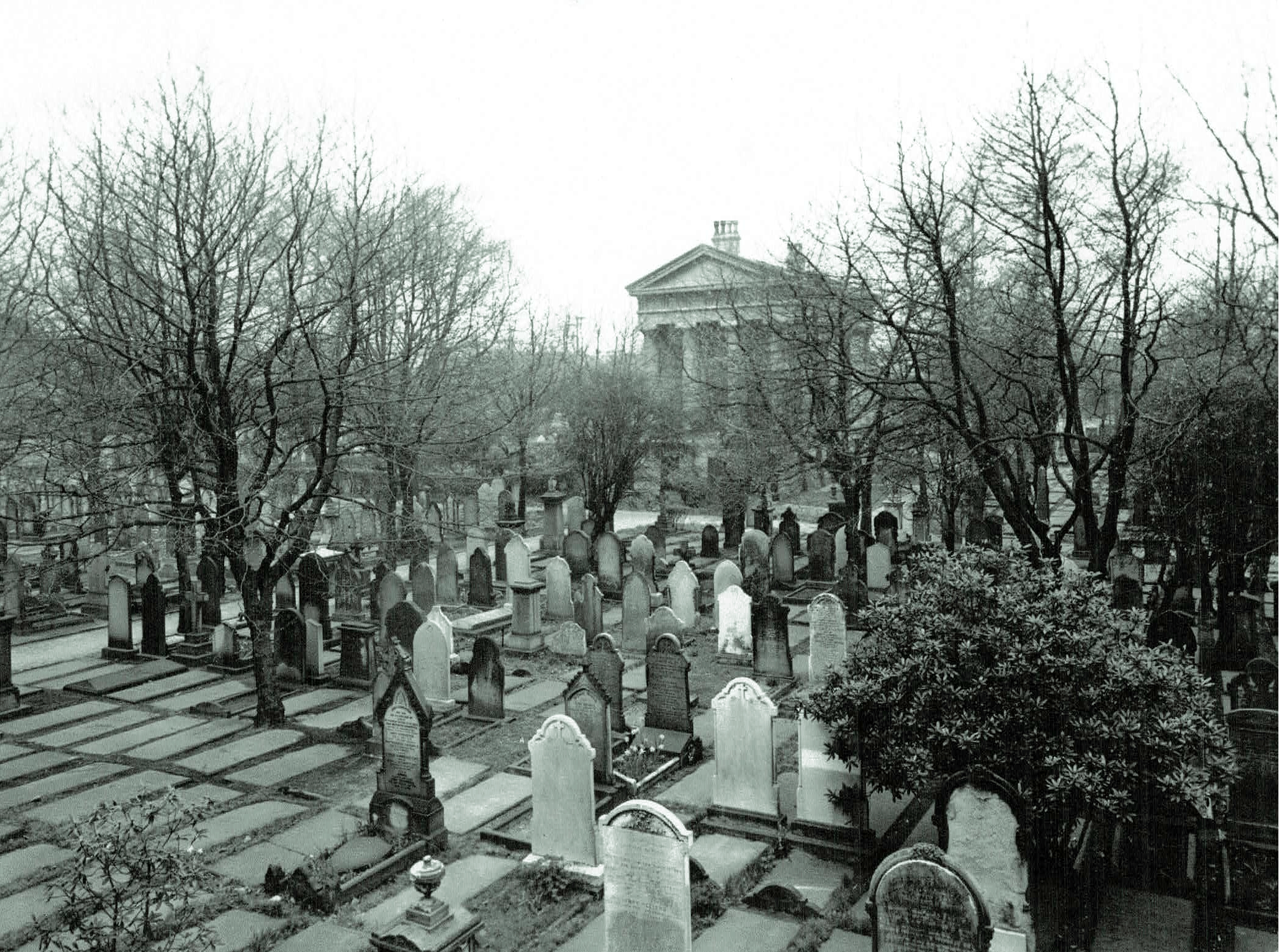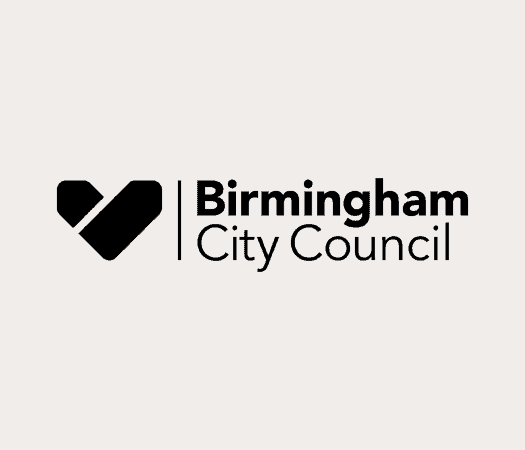The General Cemetery
The Birmingham General Cemetery Company was founded in 1833 by a group of enterprising businessmen, who were nonconformists (protestants who did not adhere to the doctrine of the Church of England). Their aim was to solve the shortage of burial space in the city and create a place open to all. This would allow them freedom from the regulations surrounding Church of England churchyards, where the fees were paid to the church and their own ministers could not conduct funerals. Before the cemetery opened, most nonconformists had no choice but to accept burial in the Parish churchyard because very few chapels had their own crypt or graveyard. The cemetery was also envisaged as a profit-making venture, being run by a joint stock company and aiming to make money for the shareholders.
After considering several sites, land at Key Hill (sometimes spelled ‘Kaye Hill’) was selected for the new cemetery. At the time, this was a relatively rural location, providing impressive views across the countryside beyond Birmingham. The area was mostly fields and gardens but part had also been used as a sand quarry so this site would allow the creation of a dramatic terraced landscape, ideal for building catacombs. The company also continued to sell the sand, which increased the area available for burial and provided extra income until the 1930s. The location means that Key Hill is sometimes also called Hockley Cemetery.

Birmingham’s First Garden Cemetery

The cemetery which opened on 23 May 1836 was not consecrated and was open to all creeds and denominations. People could provide their own minister or use the services of the cemetery chaplain for funerals. The vast majority of those interred at Key Hill were Christian, mostly nonconformists, such as Baptists and Unitarians. There were also some Anglican (Church of England) burials, especially before Warstone Lane Cemetery opened in 1848. There are a small number of Muslims buried there, plus many with no formal faith such as Atheists and Agnostics.
The cemetery landscape with its winding pathways and key features like the sandstone gateposts, catacombs and chapel were designed by Charles Edge, an architect who was a board member. His design was inspired by similar garden cemeteries in other cities like Paris, Liverpool, Glasgow and Sheffield. The funerary chapel resembled a Greek temple and had a house in the basement where the chaplain and his family lived. Neoclassical buildings were popular with nonconformists in the Victorian era. This architecture was associated with civilisation and democracy, which the businessmen of Birmingham would have found very fitting for their visionary new cemetery.
Key Hill cemetery is Grade II* listed by Historic England in recognition of the significance of this landscape, including the survival of some of the original planting scheme by John Pope and Sons of Handsworth.

The Rise, the Fall and the Future
Although the cemetery was very successful during the 19th century, it ran into financial difficulty in the 20th century. Some of the key issues were changing funeral tastes after WWI, the lack of income from sand quarrying after the 1930s and difficulties caused nationally by WWI and WWII such as a lack of staff to maintain the grounds. In 1952 the joint-stock company who ran the cemetery was dissolved and Key Hill cemetery was compulsory purchased by Birmingham City Council. Sadly, the chapel was demolished in 1966 and many gravestones were buried or removed to facilitate easy maintenance. Since then, the importance of the cemetery has been recognised and there has been substantial work to preserve the cemeteries including repairs to the boundaries and gateposts which are Grade II listed in their own right. The Friends group, which was founded in 2004, have worked hard to raise funds for memorial restoration projects and improve the cemetery landscape. Many people have also contributed to our understanding of the cemeteries by researching the graves, including the Jewellery Quarter Research Trust.

The Jewellery Quarter Cemeteries Project saw extensive catacomb repairs in 2019. Pathway and drainage improvements took place in 2020, including the creation of a new seating area above the catacombs. A new safety railing was also installed at this time. In September 2021 the interior of the catacombs was open to the public for the first time, following the fitting of a new safety floor.


